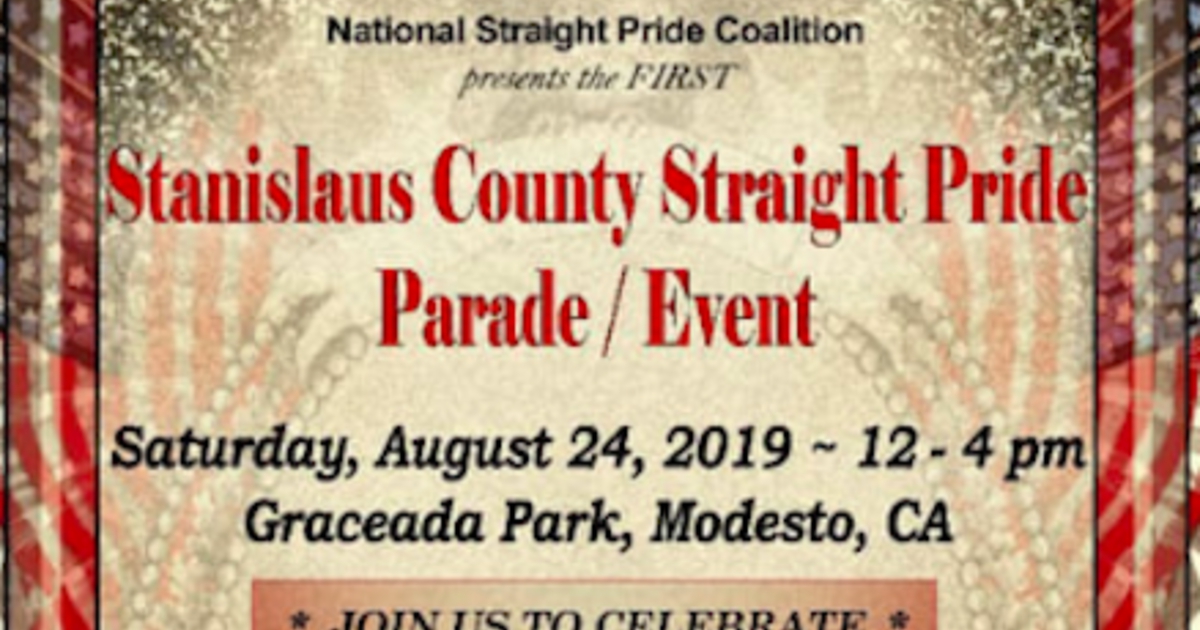For 75 years, East Harlem, has been the political and cultural heart of the millions of Puerto Rican who no longer live on the island. But now a proposed plan to rezone this New York City Latino neighborhood for luxury apartments threatens to still that heart.
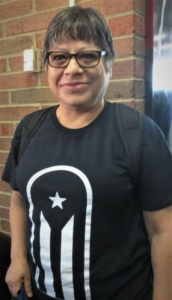
Few know what’s at stake better than Marina Ortiz. She is the founder of East Harlem Preservation, whose goal is to “preserve East Harlem as a Black and Latino community.”
For 13 years Ortiz has fought creeping gentrification in East Harlem. Now gentrification threatens to gallop. The city-sponsored zoning plan, Ortiz said, would demolish working-class housing to build luxury high rises and jack up all area rents to unaffordable heights. This would “force out the low-income African American and Latino residents and destroy the neighborhood’s unique culture,” she said.
El Barrio residents have publicly denounced rezoning at hearing after hearing. The city administration, long a front for big real estate, ignores the community’s opposition and sugar-coats the poison pill of rezoning as “helping” East Harlem.
Mayor Bill de Blasio and East Harlem City Council Representative Melissa Mark Viverito claim the plan provides a small number of “affordable” new apartments. But even these apartments are priced out of the reach of El Barrio’s current low-income residents. The City Council will soon vote on whether to implement the plan.
‘I don’t want to see our culture forgotten’
“East Harlem was founded as an affordable haven for low-income people. Most of the immigrant groups that settled here elected to leave.” But poor Black and brown residents didn’t really have that option, she said. “This has been a Black and Latino community for many generations. We have nowhere else to go. I don’t want to see our history erased. I don’t want to see our culture forgotten. I don’t want to see that become a footnote.”
To these predatory banks and corporations, everything is profits. They care nothing about who moves in and who is pushed out, and least of all about the integrity of the working-class community in El Barrio, and the hard work it took to build that integrity.
East Harlem is the mainland’s oldest Puerto Rican community. Islanders have been migrating here for over a century. After World War II, however, some 450,000 Boricuas came here after they were forced off the land by a Wall Street corporate transformation of the island’s economy from rural to industrial.
Ortiz ‘s family was part of this great migration. “I grew up at 2030 Lexington Avenue in a building owned by my grandfather who immigrated to the U.S. from Puerto Rico for health reasons,” Ortiz explained. “He had a grocery store across the street, a bodega. I was named after an aunt who came here and who died of tuberculosis. My grandfather lost everything, paying medical bills for himself and his family.
“I moved to the South Bronx when I was 15 but always came back to visit family and enjoy cultural events. I always felt connected. In 1999, gentrification became the buzz word. … By 2003, I felt a pull to come back and put up a struggle against gentrification.” Even then, Ortiz said, she had a hard time finding an affordable apartment.
Racism, ghettoization turned into a culture of resistance
What was the draw? Confined to a neglected and run-down neighborhood, the people of El Barrio took over long-abandoned buildings and lots and streets for community centers, ball fields, as murals for their art. It was here that African Americans and Puerto Ricans took the trauma of displacement, ghettoization and racism and turned it into a warm and creative culture of community and resistance. The neighborhood has been further enriched in recent years by immigrants from the Dominican Republic, Mexico and Central America.
There was Auturo Schomburg, who emigrated in 1891. He never forgot the lies he was taught as a boy in school—that African people had no history or culture. Schomberg, who called himself “Afro- borenqueno,” devoted his to life documenting, and writing on that rich and varied history and culture. His vast collection is now housed in Harlem’s Schomberg Center for Research in Black Culture.
Vito Marcantonio, an Italian-American, was El Barrio’s representative to the U.S. House of Representative for 14 years in the 1930s and 1950s. On five separate occasions, Marcantonio submitted bills to the U.S. Congress calling for Puerto Rican independence. Trained as a lawyer, he traveled to Puerto Rico in 1936 to represent Nationalist leader Pedro Albizu Campos in court.
El Barrio gave birth to Salsa, poetry and art
The residents of East Harlem filtered the music of the 1960s music through holiday celebrations, Afro-Carribbean spiritual traditions and street parties and gave birth to Salsa and Boogaloo. El Barrio’s internationally known virtuosos include Tito Puente and Marc Anthony.
Julia de Burgos, one of Puerto Rico’s most beloved poets, lived and died in El Barrio in the 1950s.
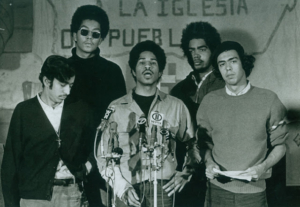
In the 1969, members of the Young Lords Party, fed up with the lack of city services, organized neighborhood brigades to clean accumulations of uncollected trash from the sidewalks of 110 Street. They boldly left the trash in the middle of the street so that city was forced to pick it up to avoid traffic jams. The Lords took over the First Spanish United Methodist Church on 111 Street, declaring it the People’s Church, after the clergy there refused them space for a breakfast program. They set up a free breakfast program for children, a clinic, and free testing for lead poisoning.
1960s activism found its cultural expression in the Puerto Rican artistic movement. El Barrio resident Pedro Pietri was a key figure of the Nuyorican Poets. In 1969, El Museo del Barrio, now a world-class museum, was created to encourage, house and document East Harlem’s Puerto Rican art.
Community space no longer unaffordable
Years later, local artists took over an abandoned school on 106 Street, named it the Julia de Burgos Cultural Center, and pushed the city to form a cultural center in the landmark building. In addition to running their own ground-floor gallery, Taller Boricua managed the center’s community space for many years.
“This is where a lot of Puerto Ricans were honored. We held public memorials and political fundraisers there. The annual Bride’s March [against domestic violence] ended there,” Ortiz said.
But the city “took it away as part of a political vendetta. They closed the community space and second floor theater for over three years. It was ultimately taken out of the hands of local artists and handed over to the politically connected Hispanic Federation. Today you need to pay $800 and have an insurance policy to rent the space. It is inaccessible to the community.”
El Barrio murals
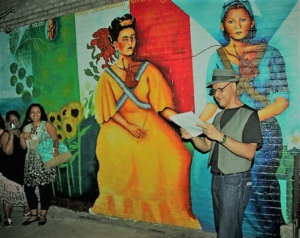
Then there are the murals: On 107 Street, Oscar Lopez Rivera, on 105 Street, Pedro Albzu Campos and Che Guevara. “These are the last remaining of 10 political murals created by local artists in 1999 without permission.” Ortiz and others have been involved in their restoration. “These were done by local artists working on projects that meant something to the community and involved them in the process.” She explained that other, more extravagant murals that have been commissioned by politicians in recent years “are apolitical” and don’t involve local artists.
People’s ball field given to a developer
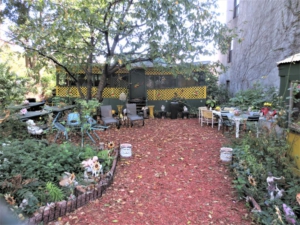
Then there is the ball field at 111 Street. In the 1970s the buildings on an entire block were seized by the city through eminent domain and demolished. The lot sat abandoned for over 40 years. So El Barrio residents build themselves a ball field for their children, and community gardens where people gathered. Recently, the city gave all the land on this block to a private developer to build “mixed income, mostly market rate housing, a charter school, and a space for several large non-profits.” The ball field is now fenced off, and most of the gardens will be destroyed, said Ortiz.
“There will be zero housing for the people who live here. People need affordable housing now. People who earn minimum wage can’t afford this. Seniors are especially hard hit.”
Politicians complicit in gentrification, undermine community control
What Ortiz described is gentrification in installments. But this new rezoning plan, she said, will “accelerate gentrification to the thousandth degree.”
The politicians of 2017 are no Vito Marcantonios. They are complicit in the gentrification and undermine community control. “The cultural or political history we have continues to be erased and stolen under the guise of a neo-liberal, progressive agenda,” Ortiz said.
Mayor Bill de Blasio and East Harlem’s City Council representative Melissa Mark Viverito pitch the rezoning of El Barrio as a boon for the community because the plan will supposedly create 1,300 new “affordable” units. But even this pittance squeezed from real estate interests will not benefit the people now living in El Barrio. The units are “affordable” only for a family making $40,000-$50,000 a year. El Barrio incomes range from $12,000 to $28,000 a year, with minimum wage often being the only income.
“[Mark Viverito] sponsors all these wonderful cultural events,” said Ortiz, “while she is going against the entire community” by backing the rezoning. It is “outrageous that rezoning is being sold as something that the neighborhood wants.”
What are the alternatives for East Harlem?
“You don’t have to rezone. Money can be used for city development of community land trusts,” where land and buildings are owned outright by the community, which can then create housing permanently within the reach of homeless and low-income people.
Another option, Ortiz said, is to “re-zone for 100 percent affordable housing.”
Ortiz and other activists have been going to every public hearing to oppose the rezoning. Her group, East Harlem Preservation and the Justice Center in El Barrio are gathering thousands of petitions against the rezoning, educating the community to the dangers of the plan, and more.
They are not alone in the fight against rezoning. The East Harlem/El Barrio Land Trust seeks to place land permanently in the hands of the community. El Barrio Unite, and Picture the Homeless are also fighting for low-income housing. Other allies include members of the Movement for Social Justice in El Barrio, which represents street vendors, tenants, and Mexican and Central American immigrants.






